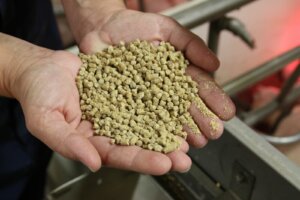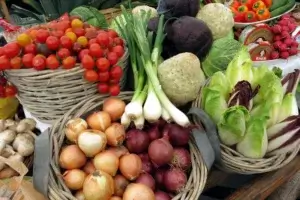This Northern Soybean Marketing website (https://www.soyquality.com/essential-amino-acids/) exemplifies why falling protein must be added to the lists of bipartisan reasons why commodity checkoff system reform is needed: Feed sales, food security, and rainforests are harmed when soybean protein falls unchecked, sound science is hidden, and soybean value clarity is lacking. Congress has noticed checkoff system trouble too:
SITUATION
Commodity soybeans have lost nutrition value for 20 years, since biotechnology debuted. Commodity soybeans are mostly crushed and used to feed livestock. The soybean oil that’s enjoying high demand today is naturally inverse to protein. The biological and social tension dividing protein and climate-driven biofuel policies threatens to drive protein levels down further. Instead of educating farmers and soybean customers this NSM website – and the commodity checkoff system overall – are missing opportunities for farm and ecosystem value improvement.
PROTEIN SOLUTIONS
- The first step is including isoleucine and valine in soybean feed value calculations. Both amino acids are helping DDGS compete with soybean and corn sales today. Adding those two AA’s makes soybean value easier to see.
- Each of the five amino acids sells for different prices. So adding the five together as equally valued nutrients obscures soybean value. Each amino acid has a distinct value that should be counted separately to clarify value.
- The 5EAA math doesn’t add up. If all 7 amino acids sold today are summed up — instead of 5 being summed then divided by crude protein — the correlation with feed value significantly improves.
- Count the ecosystem value of soybeans. Synthetic amino acids are routinely used to replace corn and soybean meal with higher-emissions, subsidized DDGS left over from ethanol plants. Higher soybean meal protein makes corn demand naturally increase in pig and chicken diets by pushing DDGS out of the diets. The potential corn grain sales with better soybean protein can reach several bushels more corn per ton of feed sold.
- Another important consideration is soybean meal and corn have significantly lower emissions compared to the DDGS, which cut prices to replace soybeans and corn. Including the emissions value of soybeans can help climate teams meet their goals faster: https://www.sciencedirect.com/science/article/abs/pii/S0377840120305113
- Finally, 60 percent of soybeans are shipped overseas. That means the protein problem extends beyond the NSM group because the largest export markets (Asia) are served by this region. Because the same genetics companies breed most of the global soybean seed, failure to reverse the nutritional slide in USA means more rainforests are being plowed to feed people than would be needed without the protein losses.
SOY PROTEIN IS SUPER-POWERFUL!
Soybean protein is so powerful here’s what can be gained by reversing the 20-year slide:
Common sense and Nature say, “It’s time to stop hiding protein light under bushels.”
If you want to help, please visit www.Proactivism.com. It’s a grassroots campaign. Please sign up to help and share this post if you can! Thanks!









Leave A Comment